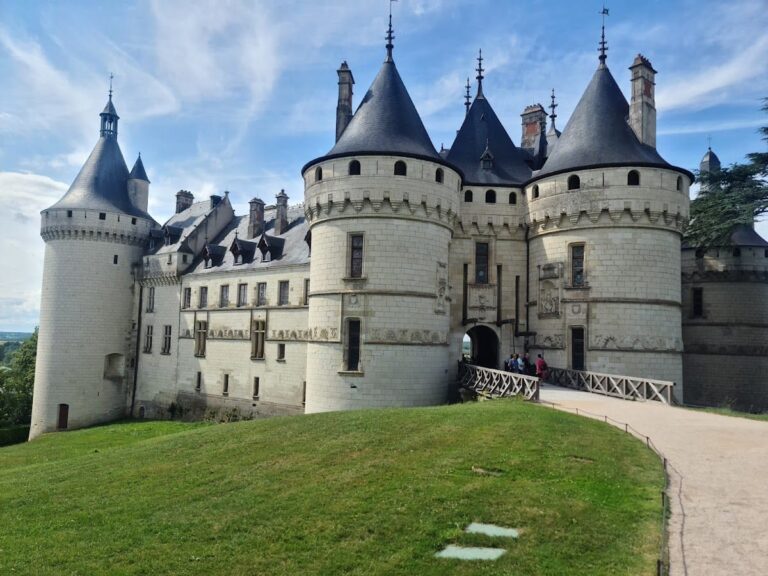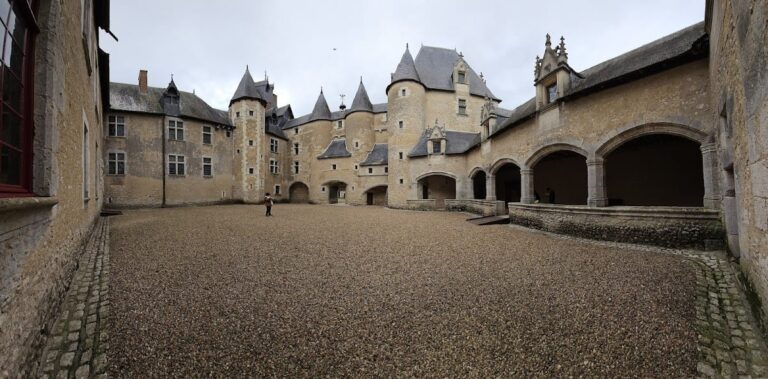Castle of Amboise: A Historic Royal Residence in Central France
Visitor Information
Google Rating: 4.5
Popularity: Very High
Google Maps: View on Google Maps
Official Website: www.chateau-amboise.com
Country: France
Civilization: Medieval European
Remains: Military
History
The Castle of Amboise is situated in the town of Amboise, within the Indre-et-Loire department of central France. It occupies a rocky plateau overlooking the Loire River. The site originally served as a Gallic oppidum, a fortified settlement, before becoming a Roman castellum named Ambacium. In the 4th century, the Roman governor Anician fortified the location, establishing its early defensive role.
During the early Middle Ages, the castle became a contested stronghold between regional powers, notably the counts of Anjou and Blois. In the 10th century, Ingelger, the viscount of Angers, further developed the fortifications, laying the foundation for the medieval castle. The influential House of Amboise controlled the castle until 1434, when it was seized by the French crown following a conspiracy against royal favorites.
From the 15th century onward, the castle transformed into a royal residence. King Charles VIII notably expanded and remodeled it, turning it into a principal royal palace. Around 1495, he introduced the first Renaissance garden in France, inspired by Italian artists and architects he brought back from his campaigns in Italy. Subsequent monarchs, including Louis XI, Louis XII, and Francis I, continued to enlarge and enhance the castle. By the mid-16th century, it contained 247 rooms and three courtyards, ranking among the largest royal residences of its time.
The castle witnessed several significant historical events. It was the birthplace of Charles VIII in 1470. In 1560, it was the scene of the Amboise Conspiracy, a failed plot during the French Wars of Religion. Three years later, in 1563, Catherine de Medici signed the Edict of Amboise there, which granted limited religious freedoms to Protestants.
After the 16th century, the castle’s importance declined. It served variously as a military garrison and a prison for notable figures such as Nicolas Fouquet and Abd el-Kader. Parts of the castle were demolished in the 17th and early 19th centuries. Restoration efforts began in the 19th century under architects like Pierre-François-Léonard Fontaine and Victor Ruprich-Robert. The castle has been protected as a Monument historique since 1840 and is currently managed by the Fondation Saint-Louis.
Leonardo da Vinci spent his final years nearby at Clos Lucé and was buried in the castle’s Saint-Hubert chapel, which remains a prominent feature of the site.
Remains
The Castle of Amboise occupies a roughly triangular plateau of about 24,000 square meters, with sides measuring approximately 212 meters along the Loire River, 175 meters on the east and south, and a narrow 19-meter western tip. The elevation ranges from 50 to 62 meters above the river. The castle’s main surviving structures include a two-winged royal residence known as the Logis Royal.
One wing, built by Charles VIII, displays Gothic-Flamboyant style with brick and Tuffeau stone construction, steep slate roofs, and richly decorated façades featuring triangular gables and fleur-de-lis motifs. The adjoining wing, traditionally attributed to Louis XII but likely begun by Charles VIII, shows early French Renaissance style with pilasters, sculpted window surrounds, and coats of arms of France and Brittany on its gables.
Four large round towers stand at the corners of the plateau. The Minimes Tower on the northeast side measures 23 meters in diameter and 25 meters in height. The Heurtault Tower on the south side is 24 meters in diameter. Both towers contain wide spiral ramps inside, designed to allow horses and carts to reach the castle terrace, a rare feature in France inspired by Italian architecture. These towers have thick walls up to four meters and numerous arrow slits.
The Garçonnet Tower on the northwest side, built between 1466 and 1468, has a 2.5-meter-wide spiral staircase with 90 steps. It originally had two additional floors and a battlemented walkway, which have since been lost. The Tour Pleine on the west side is now partially demolished.
The castle’s main entrance is the Lion Gate on the east side, accessed by a stone arch bridge spanning a 40-meter-wide dry moat. The gate is flanked by a 13th-century tower featuring machicolations—openings through which defenders could drop objects on attackers—and a smaller postern gate.
The Saint-Hubert Chapel, constructed between 1491 and 1496 by Flemish artists under Charles VIII, is a late Gothic oratory made of white Tuffeau stone. It has a cruciform plan about 12 meters long and 3.75 meters wide. The chapel features richly sculpted portals and stained glass windows depicting Saint Louis. It houses the tomb of Leonardo da Vinci.
Originally, the castle included eight residential buildings, two chapels, a collegiate church named Notre-Dame-Saint-Florentin, stables, and a formal Italian Renaissance garden. Most of these structures have been lost or heavily altered. The Renaissance garden, designed by Pacello da Mercogliano, was the first of its kind in France, featuring parterres, galleries, and fruit trees. Today, it has been replaced by a landscape garden with Mediterranean plants and a modern Oriental garden commemorating Abd el-Kader’s companions.
Inside the Logis Royal, notable rooms include the Salle des Gardes Nobles with a central Gothic fan vault supported by a single column, the Salle des Tambourineurs, and the Great Hall (Salle des États or Salle du Conseil), which covers 176 square meters and is divided by five slender columns decorated with royal emblems. The Louis XII wing contains Renaissance-style apartments such as the Chambre Henri II, furnished with a large Renaissance bed and period tapestries, and the Salle de l’Échanson, featuring richly carved woodwork and Aubusson tapestries.
The castle’s current condition reflects extensive restoration work from the 19th and 20th centuries. Some original medieval and Renaissance elements have been preserved or reconstructed, including stone carvings, stained glass by Max Ingrand, and architectural details influenced by the school of Eugène Viollet-le-Duc. The grounds include a large esplanade, remnants of dry moats, terraces overlooking the Loire, and commemorative monuments such as a bust of Leonardo da Vinci and a memorial honoring Abd el-Kader’s entourage.










